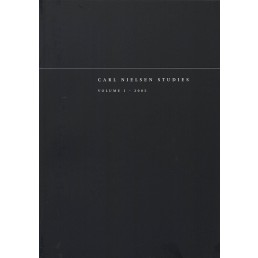Nielsen's Symphonic Waves. Energetics, the Sinfonia Espansiva, and German Music Theory
DOI:
https://doi.org/10.7146/cns.v4i0.27751Abstract
The first published analysis of Carl Nielsen’s music appeared only in the final year of the composer’s life. Povl Hamburger’s article, ‘Formproblemet i vor tids musik med analyse af Carl Nielsen’s Sinfonia Espansiva (1 Sats)’ ( Dansk Musiktidsskrift 5/6 (May 1931)), was greeted sceptically by Nielsen himself. Nevertheless, Hamburger’s analysis suggests some interesting parallels with trends in contemporary German music theory, particularly the work of Hans Mersmann. Re-reading the Sinfonia Espansiva in the light of such work offers insights into Nielsen’s approach to symphonic structure, particularly his employment of energetic wave forms, and problematises his approach to the genre. Such wave forms, I argue, are fundamental to Nielsen’s understanding of symphonic design, and can be fruitfully applied to earlier works, such as the first movement of the Second Symphony, as well as informing the tone and design of later symphonies such as the Fourth (‘The inextinguishable’). Nielsen’s idea of the symphony is underpinned by a powerfully organicist view of musical motion, one which is in tune with many of the vitalist currents in northern European culture at the start of the century. But in the Third Symphony, Nielsen also strikes a more complex, modernist note. Through comparison with the symphonic music of his contemporaries, notably Gustav Mahler and Edward Elgar, Nielsen emerges characteristically as a critical, but ultimately affirmative voice in early twentieth-century music.Downloads
Published
2009-04-10
How to Cite
Grimley, D. (2009). Nielsen’s Symphonic Waves. Energetics, the Sinfonia Espansiva, and German Music Theory. Carl Nielsen Studies, 4. https://doi.org/10.7146/cns.v4i0.27751
Issue
Section
Articles
License
- Authors retain copyright and grant the journal right of first publication with the work simultaneously licensed under a Creative Commons Attribution License that allows others to share the work with an acknowledgement of the work's authorship and initial publication in this journal.
- Authors are able to enter into separate, additional contractual arrangements for the non-exclusive distribution of the journal's published version of the work (e.g., post it to an institutional repository or publish it in a book), with an acknowledgement of its initial publication in this journal.

